Authorized by the Prime Minister, Deputy Minister of Culture, Sports and Tourism Hoang Dao Cuong presented the decision to recognize the Three Buddha statues of Con Son Pagoda as a "national treasure" to Hai Duong province.
According to the Management Board of Con Son - Kiep Bac relic site, through the ups and downs of history, today Con Son pagoda still retains the architectural imprints of many eras along with many extremely rich tangible and intangible cultural values: a system of steles from the 14th - 19th centuries; a system of worship statues dating from the 17th - 19th centuries; Buddhist scriptures, Mong Son offering altars, charms of the Third Patriarch Huyen Quang, the genealogy system of the Nguyen Trai family... Among them, the set of Three Buddha statues of Con Son pagoda is one of the rare antiques, containing unique values.
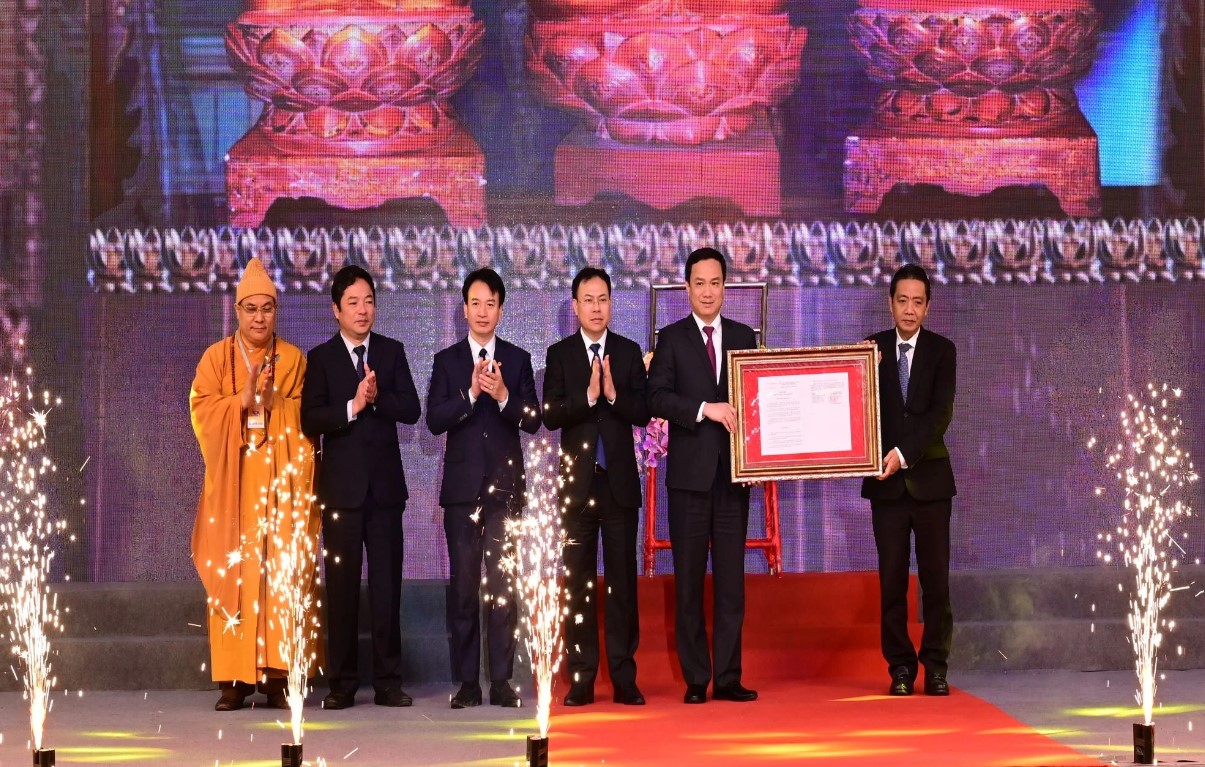
Deputy Minister of Culture, Sports and Tourism Hoang Dao Cuong (far right) presents the decision to recognize the Three Buddha statues of Con Son pagoda as a "national treasure" to Hai Duong province - Photo: Thanhnien
The Three Worlds statues include three Buddhas: Buddha of the Past, Buddha of the Present, and Buddha of the Future. Their full name is: "The Three Worlds Eternal Dharma Body", which means that the past, present, and future exist eternally and are not dependent on the form, name, color, or appearance of the visible world , and are not dependent on space and time.
The Three Buddha statues of Con Son Pagoda are made of jackfruit wood, lacquered and gilded, in a meditative sitting position on a lotus throne in the style of exorcising demons, dating from the Later Le Dynasty.
This set of statues is associated with the process of restoration and construction of the temple, with the characteristics of shaping, decoration, multi-layered gilding, and typical decorative patterns on the statues, not only inheriting the quintessence of art from previous times but also honoring the ideal beauty of Buddhism.
The statues of the Three Buddhas of Con Son Pagoda have a unique appearance. The special feature is the cassock, a piece of cloth wrapped from the left shoulder to the right side, completely exposing the right shoulder, arm, and half of the chest. The phenomenon of the right shoulder being dislocated on these statues seems to show respect for the superiors.
In the treasure trove of ancient Vietnamese art, there are statues of the Three Worlds in every pagoda. Most of the Buddha statues wear a cassock that covers the body in two equal halves, but this type of cassock is very rare. In the whole country, it is only found in the Three Worlds Buddha set at Con Son pagoda and the Three Worlds Buddha set at Hiep Thuan pagoda (Phuc Tho district, Hanoi ).
The Three Buddha statues of Con Son Pagoda have special historical values, very rare and precious shapes, and are works of art with aesthetic value typical of a style and a historical period.
The statue has a face with standard portrait features, close to the Indian face, with a high, straight nose, curved eyebrows, prominent eyes, a full, well-proportioned mouth, and upward-curved corners. The face has many religious details but is still very kind and elegant.
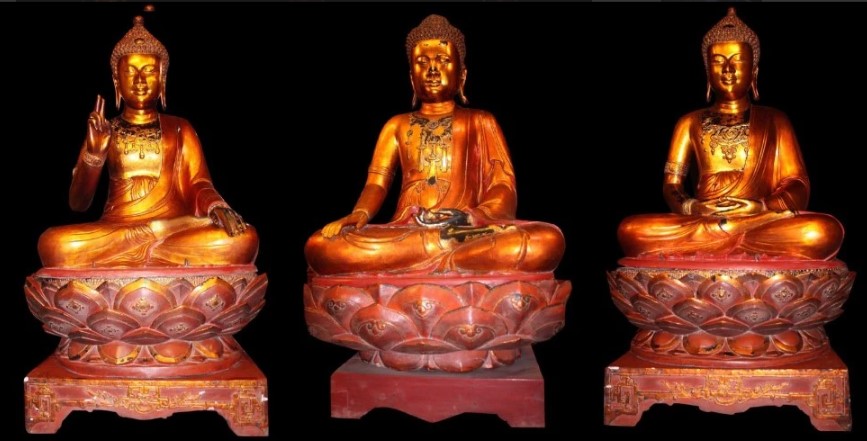
Statues of the Three Buddhas of Con Son Pagoda.
The statue's body is very thick, with a full chest, a moderately slim belly, and a soft, supple, and rhythmic sitting posture. In particular, the cassock seems to have only one layer, and is also tight-fitting, as if inherited from the Ly Dynasty style, with prominent details such as creating a distinct hollow between the arm and the body, and at the same time, the folds of the robe are few, not too many like in statues from later periods. The lotus throne is in the style of the Mac Dynasty, with a tight mass, and full, bulging lotus petals.
The Three Buddhas of Con Son Pagoda is one of the few beautiful statues from the Later Le Dynasty. The statues are carved very carefully, with attention to every detail.
The artist paid attention to a beauty according to the contemporary concept in a benevolent and graceful form. The Three Buddha statues carry the meaning of natural forces, reflecting the custom of praying for rain and crops, which is the constant desire of the Vietnamese people in the Northern Delta. The simple and liberal element of the indigenous consciousness has Vietnamized religious patterns, creating cultural integration in the Vietnamese pagoda.
The event announcing the recognition as a "national treasure" for the set of Three Buddha statues worshiped at Con Son Pagoda took place on the opening day of the Con Son - Kiep Bac Spring Festival in 2024, while also holding a ceremony to commemorate the 690th anniversary of the passing of the Third Patriarch of Truc Lam, Venerable Huyen Quang.
Also here, the People's Committee of Hai Duong province also opened the Week of culinary culture, tourism and trade promotion with a total of 43 booths, including: 12 booths introducing the cuisine of Hai Duong province and regions across the country; 24 booths introducing OCOP products, tourism, traditional craft villages of Hai Duong province and 7 booths performing typical culinary performances of 3 regions; in addition, promoting and honoring 3 special dishes of Hai Duong province honored by the Vietnam Culinary Culture Association including: cha ruoi, banh cuon and banh dau xanh.
Source



![[Photo] General Secretary To Lam attends the 8th Congress of the Central Public Security Party Committee](https://vphoto.vietnam.vn/thumb/1200x675/vietnam/resource/IMAGE/2025/10/4/79fadf490f674dc483794f2d955f6045)


![[Photo] Solemn opening of the 8th Congress of the Central Public Security Party Committee, term 2025-2030](https://vphoto.vietnam.vn/thumb/1200x675/vietnam/resource/IMAGE/2025/10/4/f3b00fb779f44979809441a4dac5c7df)



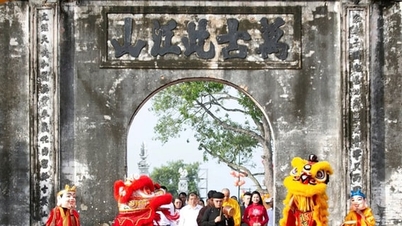





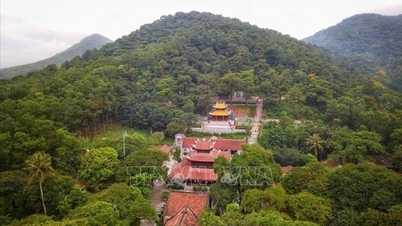



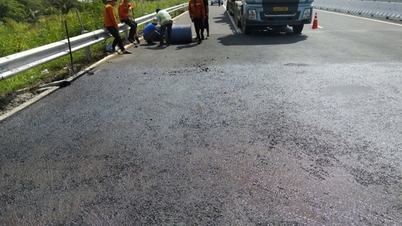

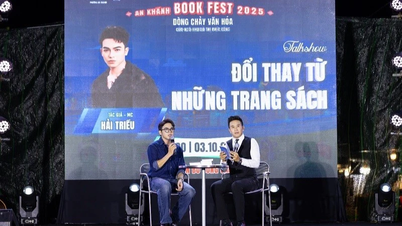



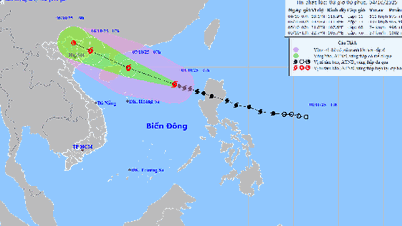

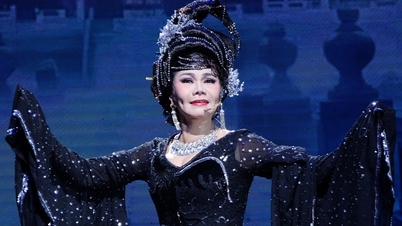










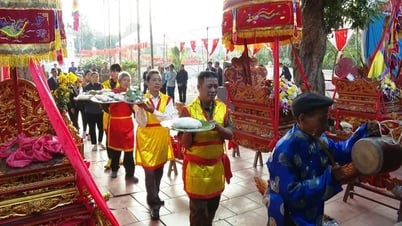
![[Photo] Bustling Mid-Autumn Festival at the Museum of Ethnology](https://vphoto.vietnam.vn/thumb/1200x675/vietnam/resource/IMAGE/2025/10/4/da8d5927734d4ca58e3eced14bc435a3)
![[Infographic] Notable numbers after 3 months of "reorganizing the country"](https://vphoto.vietnam.vn/thumb/1200x675/vietnam/resource/IMAGE/2025/10/4/ce8bb72c722348e09e942d04f0dd9729)












































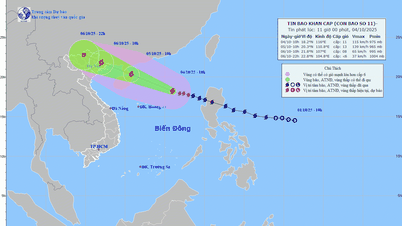

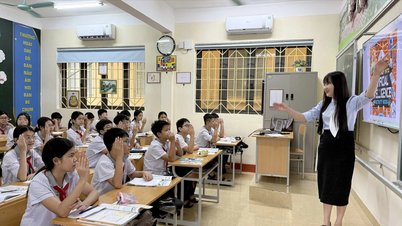

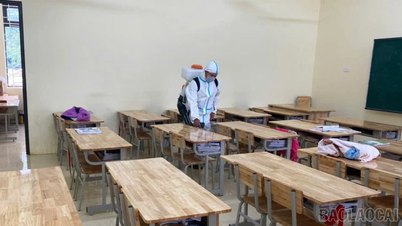
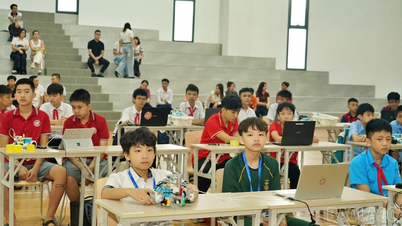
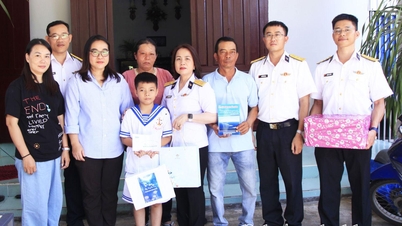

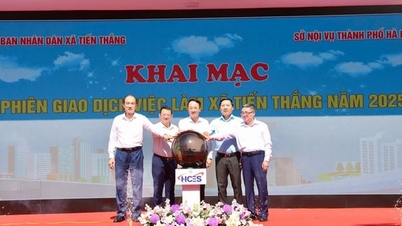





Comment (0)